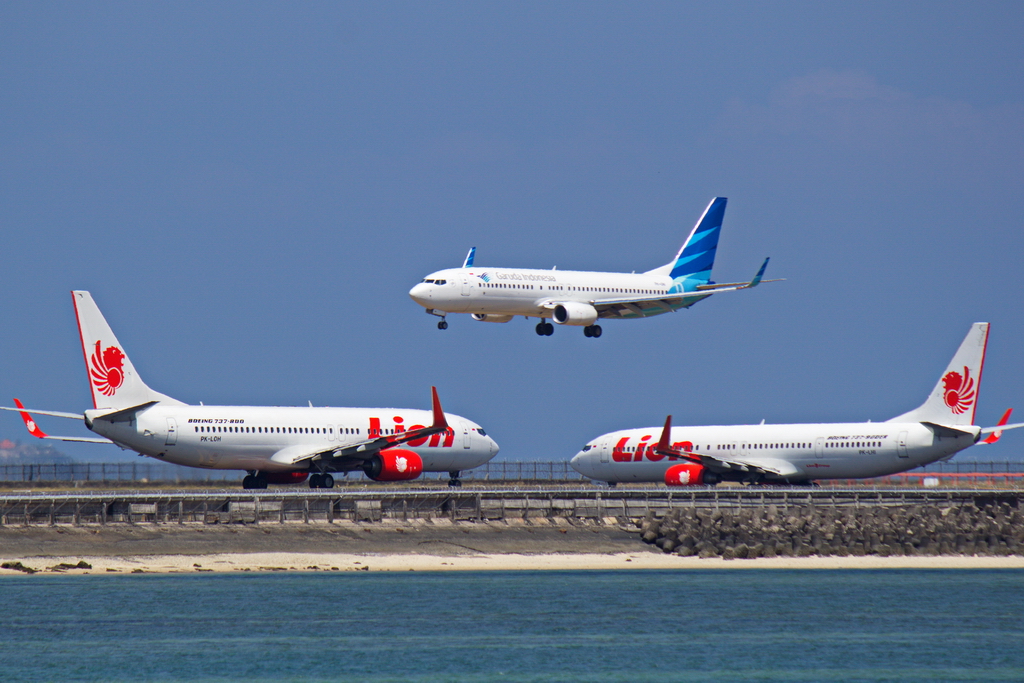‘I went from flying a C-17 (heads up display, fly by wire, glass cockpit) to a 737 Next Gen (glass cockpit) and felt like I went back in time about 3 decades,’ John Tringali, former USAF C-17 pilot and now airline pilot
The Boeing 737 is a twin jet narrow-body airliner built by Boeing. At first, Boeing was making it to be a shorter, cheaper airliner than its 707 and 727. However, the 737 has become a family of nine different models. The number of passengers it can carry ranges from 85 to 215.
The 737 is the only narrow-body airliner that Boeing is making. The only types of 737 that Boeing is still making are the -700, -800 and -900ER.
Moreover, a version of the 737 with new engines and a new design, the 737 MAX, came into service in 2017.
But despite being constantly updated, the Boeing 737 remains a 1960s jet John Tringali, former USAF C-17 pilot and now airline pilot, says.
‘I went from flying a C-17 (heads up display, fly by wire, glass cockpit) to a 737 Next Gen (glass cockpit) and felt like I went back in time about 3 decades. The 737 is a garbage jet, and I flew it for years. It’s like a new 1960s plane with a modern instrument panel slapped on. The overhead panel still has cutouts from where the round-dial mechanical instruments used to be,’ Tringali says on Quora.
‘Airline training is nothing like military training. In the Air Force, we have tons and tons of simulators and ground classes, in the airlines you get a take-home exam and start getting evaluated in the first of only a few sims because “they don’t have time” to train in the simulator. Literally, I was learning landing techniques from 737 friends on Facebook because the sim instructor didn’t do it.
‘On the C-17, and really any modern plane with an electronic overhead panel, the word “auto” means automatic, as in, it will automatically do what it needs to do. For example, in the C-17 running pneumatics off the APU, when you press the engine start button the associated A/C pack shuts itself down automatically to provide more air to the engine. Pretty standard for a jet, usually if you’re trying to run more than just the engine starter off the APU air you’ll get a hot or hung start. The C-17 APU was a beast, so it could run 2 sources simultaneously, like 2 engines starting together, 2 A/C packs together, or 1 of each, so if you had both packs running for cooling and started an engine on the left side, the left pack shut off by itself. Auto.
Tringali continues;
‘The 737 has pack and isolation switches on the pneumatic panel that say “auto” but they really only sort of mean that. I’m sitting in the sim and go to start an engine, but there’s no bleed air. “You have to shut off the pack.” says the instructor “But the switch is in auto.” I say. “Yeah, but you have to manually take it from auto to off.” Okay, still no pressure “You have to open the isolation valve now.” “But it says auto!” “Yes, but you have to manually move it from auto to open.” So I’m like “What the f**k does auto mean in this jet?”
‘Same thing with going from generator to APU power. The C-17, and the 757/767, just auto-connect the busses when the APU gets up to speed. 737? Nope, after it starts you have to manually connect it.
‘Also, the 737 is incredibly loud in the cockpit. Just constant fan and air noise.
‘Everyone who flies it for a while can’t hear out of one ear.
‘It can’t hold more than one altitude worth of wind aloft data, unlike the 757/767, so if you want to look for better tailwinds at altitude you have to refer to your paper flight plan and manually do it. In other words, while cruising, the other jets monitor the fuel weight, density altitude, and 4 different wind levels to calculate the optimal flight level to cruise at. 737? Nope.
‘The controls are super sloppy and lag, which was a huge problem for me coming from a C-17 where the controls are sharp, crisp and responsive. Even the 767 is snappy compared to the 737.’
Tringali concludes;
‘I could go on… but I’ll eventually be flying it so I shouldn’t keep bashing it but… what a POS. Boeing should have buried it and tried to restore the 757 before going down the whole Max fiasco.
‘The jumpseat also sucks.’
Photo by U.S. Air Force, Riyad Filza and Bernal Saborio from Costa Rica via Wikipedia


